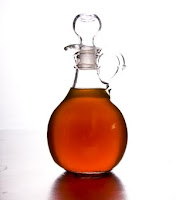What we need:
- 2 sheets of black cardboard
- sheet of felt (green, orange, purple, or red), you can use other materials like fake cobwebs, paper gloss, or anything your imagination wants,
 white glue,
white glue,- scissors,
- tape,
- ruler
- compass.
- Fold the cardboard in a cone shape, this cone has to be so tight as your head;
- Fix the cone with tape;
- Cut the free ends in the bottom of the cone with the scissors, this free end is the triangle that is formed on the base of the cone when you fold the paper, cut it, so that the base becomes a circle;
- With the compass, draw a circle on the second card sheet with less 1in of radius then the opening of the hat, use a ruler to measure the diameter of the opening (the diameter is the distance between 2 points in the circle passing in the center of it). Now, divide this value by 2, you will get the radius;
- Draw a second circle, concentric with the first but with more 2 to 3 in in radius then the first one, concentric circles have the same center;
- Cut out the larger circle;
- Cut out the inside of the smaller circle, This is where your head goes;
- Place the cone centered on top of the circle;
- Apply a layer of glue in this junction;
- Let it dry;
- Turn the hat up side down;
- The small circle is slightly smaller than the opening of the hat, about 2in remember?, with small scissors make small cuts on this cardboard flap, at the end you must be able to flap it inside;
- Apply glue inside the cone;
- Bend the cardboard in;
- Press;
- Let it dry;
- Cut some felt strips;
- Wrap and glue them around the hat;
- Use stencil-like images to decorate your hat.

Black, orange, purple, red and green.
You can use theses 5 stencils to decorate your hats:
Ghost
Bat:
Spider:
Pumpkin
Witch
Et Voila!
Bu!
Enjoy!











































